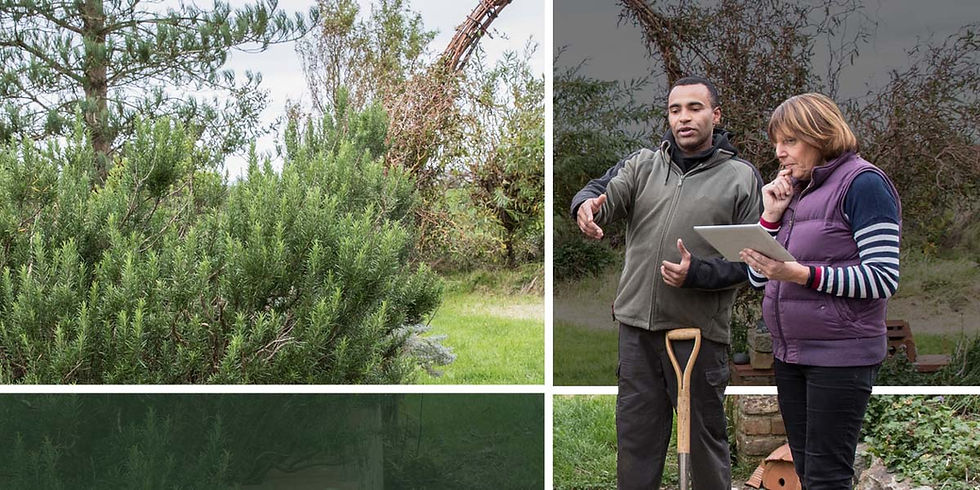When (& why) to remove last year’s growth in your garden
- Rooted in Nature

- Feb 8, 2023
- 2 min read
Updated: Apr 30, 2024
Common garden practice tells us that when the first hard frost hits, we should pull out the pruners and get to work removing all dead leaves and stems leftover in our gardens from the recently ended growing season. Though this may be the way gardeners have approached the onset of winter in the past, there are many reasons to leave those crunchy, brown leaves hanging on for a while.

Many of our native insects and animals use dead and decomposing leaves, twigs, roots and seeds as important survival sources, whether it be for nourishment, shelter or nesting. There are a great number of butterflies and moths that hibernate through the winter, using leaf litter as a cover for warmth and camouflage. Caterpillars wrapped tightly in their cocoons waiting for warm spring weather often hide themselves among the dead plant matter for protection from potential predators and other hazards. Many of our native bees will take advantage of pithy, hollow stems left from dormant perennials to carve out a nesting hole, with their eggs hatching and emerging in the spring.
With that said, allowing decomposing material to stick around for too long can begin to build up a thatch layer, eventually impeding the healthy growth of garden perennials. The wildlife conscious gardener should look at leaving a third of their twiggy stems, and most of the dead, leftover leaves from smaller perennials until late winter, with mid-February being a good target for getting things tidied up in the garden. However, certain plants do benefit from a haircut a little earlier, such as the increasingly popular sedges (Carex), which actually begin to put on new growth in mid-to-late-January. These should be trimmed around late January, with care being taken to not cut into the newly emerging leaves. Can’t stand the idea of all that brown in your garden all winter long? Consider designating a portion of your garden as a sort of wildlife safe-haven, filled with dead leaf matter, twigs and stems collected while doing your clean-up – maybe even plant a taller perennial or two with the intent of leaving the upright, pithy stems through the winter.
Remember, just as we humans tuck ourselves away into our cozy, heated homes for the cold winter months, our local critters also need a place to shelter themselves from the harsher conditions of winter. Don’t have time for these winter landscaping tasks? Call us or email us today for all of your winter landscaping needs at 443-846-0199 or info@rootedinnaturemd.com.



Comments